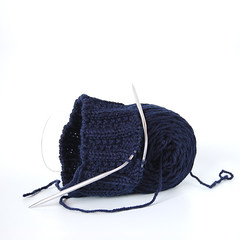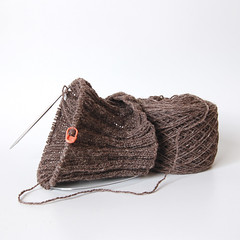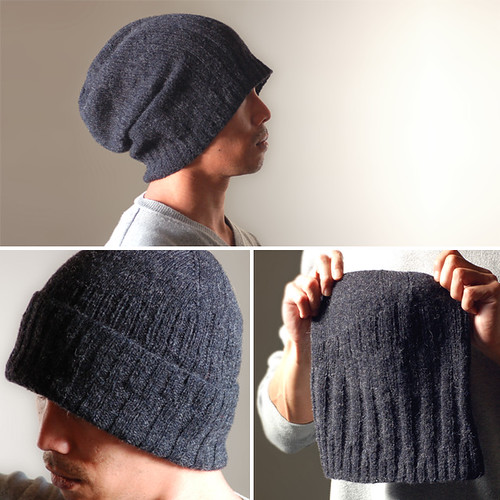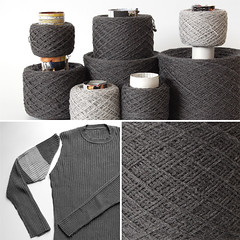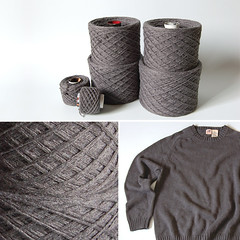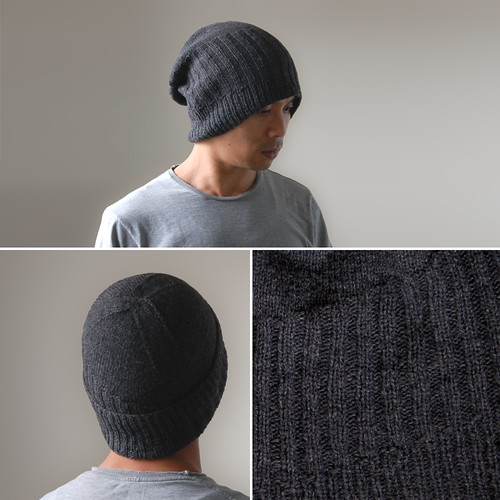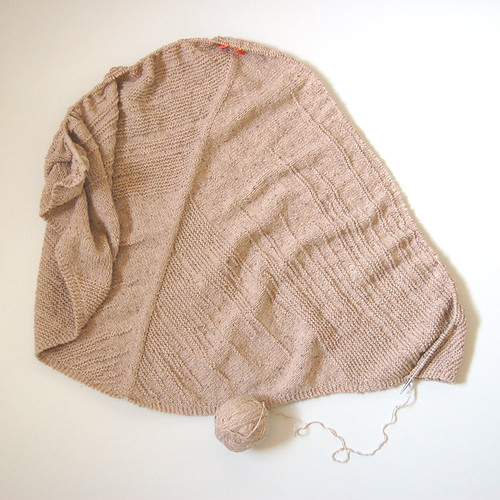The whole research experience of opening up an Etsy shop has been pretty interesting. The subject of pricing was of particular interest. It seems that so many knitters out there are underselling themselves, and in the process undermining the integrity of hand knits. Charging $20 for a beanie that took you a week to make is kind of like working in a third world sweatshop, but that's what people seem to think their time is worth.
As an independent seller of hand knits, not only am I the designer, I'm the producer, the marketing strategist, the photographer, the copy writer, the stylist, the accounts rep and (if necessary) the guy that works the returns desk. Moreover, part of being an independent business person is educating clients about product, and the value associated with buying handmade. The reason handmade costs more is because it's better.
If you've been reading my blog, you may have seen all the sweaters I've disassembled. The process of selecting which sweaters are appropriate for recycling gives me the unique opportunity to examine hundreds of sweaters from all sorts of brands. A good portion of these brands really don't provide much in the way of quality. Major clothiers cut production corners in order to cut their prices. It's not even possible for us independent crafters to take these types of production shortcuts. I don't have a gigantic industrial knitting machine in my house, and I certainly don't want one. Cheap commercial knits are cheap because they're mass produced in third world sweatshops. I have no intention of providing that type of product, and my pricing reflects that.
I spent a good part of the last two weeks researching other people's prices and calculating the value of my time and efforts, yet I still get the feeling I'm not charging enough. In calculating all the man hours I've spent getting this opening to happen, I'm still selling myself short. But the fact that I chose to do it, made it happen, and decide on a daily basis to make something out of nothing means I love what I do. That's what it means to live a creative life.
But enough with the talkie-talkie. The
gridjunky shop is open for business. Heart me, Like me, send me a love note, or maybe buy something if you don't think it's a rip-off.



